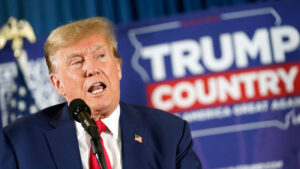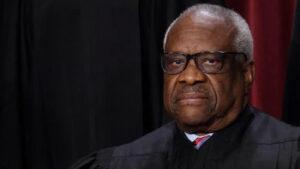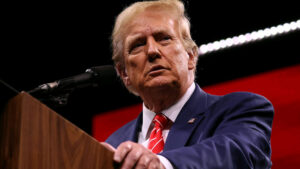Trump Warned, Told How Supreme Court Might Send Him To Prison Before Election

Photo: AP/Alex Brandon
The U.S. Supreme Court’s ruling on presidential immunity could pave the way for legal action against former President Donald Trump, according to legal analysts.
According to a report by Newsweek on Wednesday, July 24, 2024, the Court’s 6-3 decision on July 1 upheld broad immunity protections for presidents regarding their official acts but also hinted at possible exceptions that could impact Trump’s ongoing legal challenges.
The ruling established that presidential immunity covers acts carried out while in office, effectively shielding a sitting president from lawsuits related to their official duties.
However, it also clarified that such immunity does not extend to unofficial acts, potentially providing a path for prosecution in cases involving actions outside the scope of official presidential responsibilities.
Trump, the 2024 Republican presidential nominee, has been indicted on four counts related to his alleged efforts to overturn the results of the 2020 presidential election, culminating in the January 6, 2021, riot at the U.S. Capitol. The former president has pleaded not guilty to all charges.
Legal experts have pointed to Footnote 3 in the Supreme Court’s ruling as a critical element that might influence the direction of Trump’s case.
This footnote, penned by Chief Justice John Roberts, suggests that while evidence related to official presidential acts may be excluded, evidence of “what the President allegedly demanded, received, accepted, or agreed to receive or accept in return for being influenced in the performance of the act” could still be admissible.
Benjamin Wittes, a senior fellow in governance studies at the Brookings Institution, and Anna Bower, Lawfare’s legal correspondent, have analyzed this footnote as potentially offering a “loophole” for Special Counsel Jack Smith.
Wittes and Bower argue that despite the broad immunity granted to presidents, this specific exception might allow for the inclusion of evidence related to Trump’s actions surrounding the election interference charges.
In their analysis, Wittes and Bower emphasized that while the Court’s opinion broadly protects official acts, the mention of potential exceptions in Footnote 3 could prove crucial.
They suggested that Special Counsel Smith might leverage this aspect to build a case that focuses on actions and statements not directly tied to Trump’s official duties but rather to his alleged efforts to undermine the 2020 election results.
The Supreme Court’s decision has stirred considerable debate among legal experts and political analysts.
Some view the ruling as a reinforcement of the principle that presidential immunity is crucial for protecting the integrity of official duties and decisions.
However, others argue that the potential loophole could be instrumental in holding Trump accountable for actions that, while not part of his official presidential responsibilities, have significant legal and constitutional implications.
The case against Trump has already drawn considerable public and political attention, with ongoing discussions about the limits of presidential immunity and the scope of accountability for former leaders.
The interpretation and application of the Court’s ruling will be closely watched as Special Counsel Smith proceeds with the prosecution.
In the meantime, the legal landscape surrounding Trump’s case remains complex and evolving.
The potential for Footnote 3 to influence the prosecution highlights the intricate balance between protecting presidential authority and ensuring accountability for actions that could undermine democratic processes.
As the case progresses, the focus will likely remain on how courts interpret and apply the Supreme Court’s ruling, and whether exceptions to presidential immunity will provide a viable path for addressing the allegations against Trump.
The coming months will be pivotal in determining the extent to which this legal precedent will impact the broader discussion on executive accountability and the rule of law in the United States.








